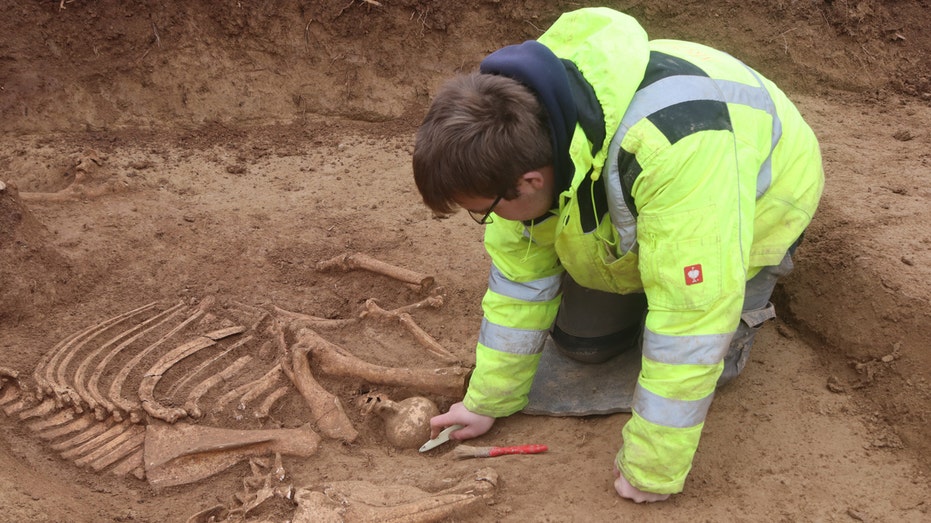- by foxnews
- 01 Jun 2025
Archaeologists uncover massive number of horse skeletons at 'important' Roman military site
Archaeologists in Stuttgart, Germany, uncovered over 100 horse skeletons believed to have been part of a Roman cavalry unit. These remains are dated to the second century A.D.

The statement, translated from German to English, noted the town was one of the region's "most important Roman military sites" in ancient times. A cavalry unit there boasted around 700 horses at its peak.
Pictures from the site show horse skeletons buried in the soil as excavators worked to clear them.
Experts say the remains are just under 2,000 years old, dating back to the second century A.D.
"The first horse bones discovered were dated to the second century using the radiocarbon method," said Sarah Roth, an archaeologist at LAD.
"Based on the archaeological and historical knowledge of Roman Bad Cannstatt, the horses can be attributed to the cavalry unit - a so-called 'Ala' - stationed at Hallschlag from around 100 to 150 AD."
She also noted that "the troop of nearly 500 riders likely had a total horse stock of at least 700 animals, with losses needing constant replacement."
"The carcasses were usually dragged individually into shallow pits, where they were buried lying on their side with legs extended or bent," LAD explained in the statement.
"The site was likely marked above ground. Despite a sometimes dense arrangement, there were few overlaps of the pits."
Roth added that the horses did not appear to die during a single event, such as a battle.
Rather, the animals were probably ill or injured when they were buried, or may have been otherwise unfit for military service.
"If the horse could still walk, it would have been brought to the horse cemetery and killed on site to avoid transporting the heavy carcass," she said.
Interestingly, some horses were buried together with items, perhaps as tokens for the journey to the afterlife.
One animal was found with two jugs and a small oil lamp, and the items were "placed in the crook of its arm as a farewell."
"Here we see a particularly close bond between the owner and his horse," Roth said. "Even after around 1800 years, the grief over the death of this one animal is still evident."
There have been several ancient Roman grave discoveries in the past year.
Fox News Digital's Ashlyn Messier contributed to this report.
- by foxnews
- descember 09, 2016
Beach days benefit mental health and well-being as visits provide 'sea therapy'
Discover the benefits of sea therapy as experts highlight how beach visits can boost mental well-being, reduce stress and improve sleep through mindfulness and relaxation.
read more




